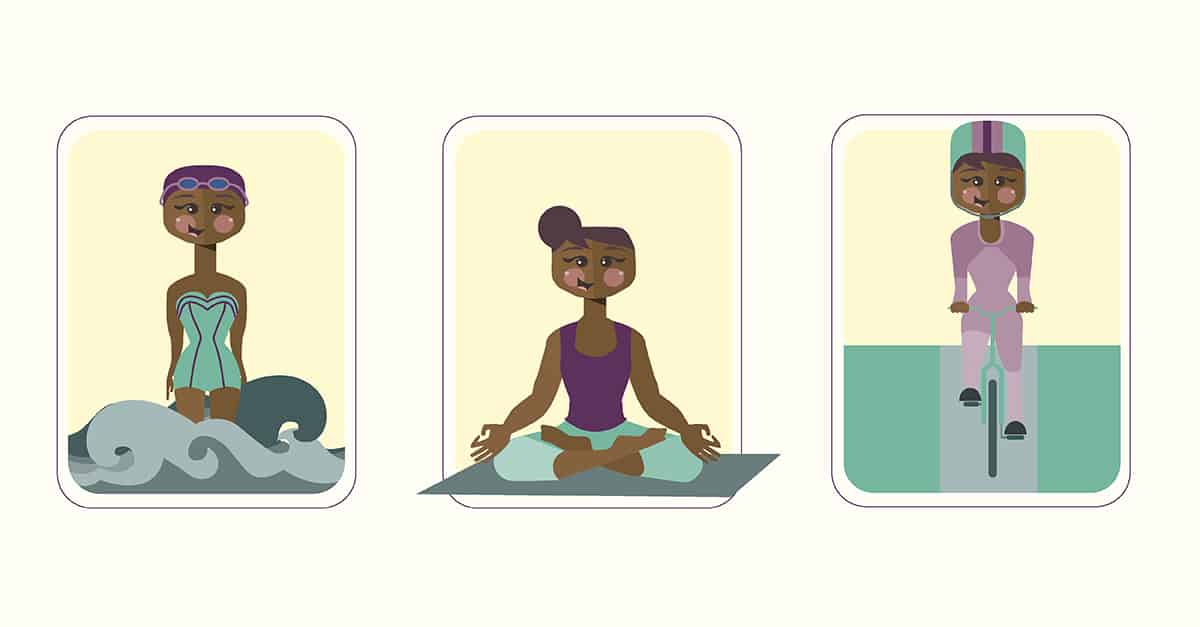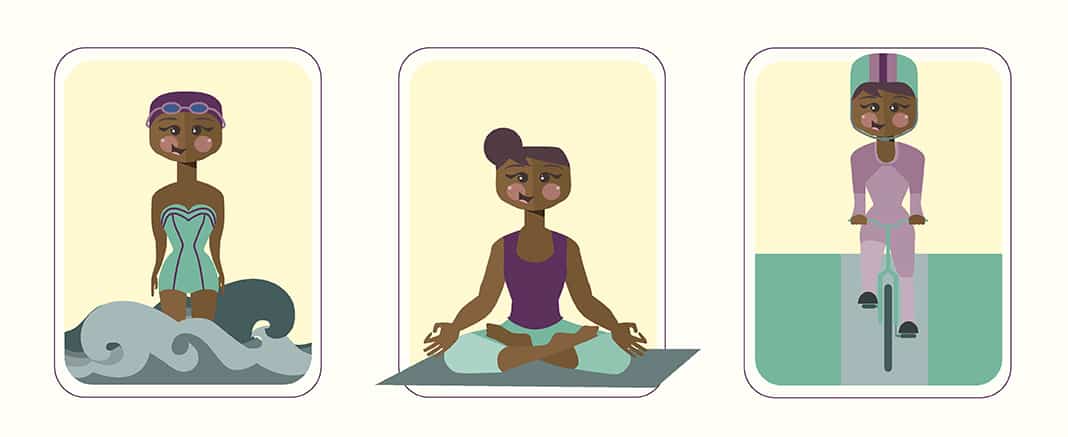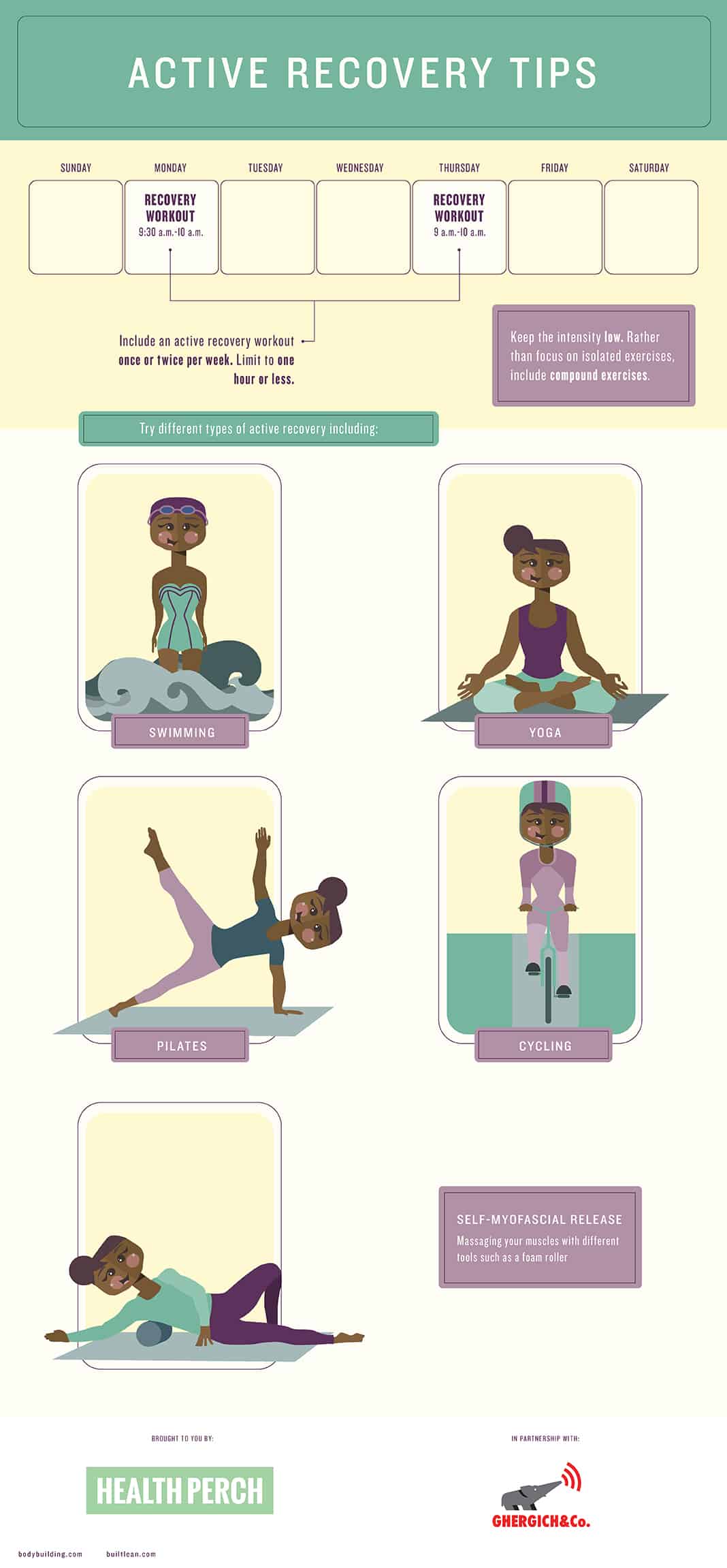It’s common to expect some level of muscle soreness after a tough workout, especially if you throw in new exercises or ramp up intensity. Some exercise enthusiasts measure a good workout based on how sore they feel the next day.
Delayed onset muscle soreness, or DOMS, occurs between 24 and 48 hours after exercise. The jury is still out on what causes it. One theory is that intense training causes the release of lactic acid, which alters the PH in muscles. This changes the way the nerves respond during sensation or movement, which in turn can cause soreness. Another theory is that exercise causes micro tears in muscles, leaving behind residual soreness during healing and regenerating.
Regardless of the underlying cause, you can reduce and even stave off muscle soreness by following these four steps.
1. Ease into a new routine
For people who prescribe to the “no pain no gain” method, this is probably the least popular suggestion to reduce DOMS. However, progressing slowly into a new training regime can prime your body to exercise more efficiently, grow muscle faster, and have less risk of injury.
Going too hard in the gym can inhibit your ability to recover for several days, reducing the overall amount of time you are able to train during the week. If you’ve ever struggled to get in and out of the car or walk down a flight of stairs after your workout, consider reducing your workout time and/or intensity.
We suggest for the first two weeks of a new exercise program or class to exercise within 50 to 60 percent of your maximum effort. By doing so, your body will gradually adapt to the overall exercise volume and intensity without putting too much stress on muscles. It may feel like you aren’t going to achieve the results you want, but remember change happens over time, not instantly.
2. Do a quick active recovery workout
Yes, there is such thing as a workout to recover from your workout. These quick 15-minute sessions take you through a series of movements that use different exercises than the ones you used during your exercise session. Yoga and Pilates are popular active recovery methods, as are gentle bodyweight exercises, dynamic stretches, and low-intensity cardio.
Active recovery workouts are typically done on days off from your regular workout schedule and are far less intense than your regular training sessions. When choosing an active recovery workout, context is important. A marathoner may jog a few miles, while someone new to running may opt to take a beginner Tai Chi class.
The golden rule with active recovery is to feel energized and better after the workout. Choose an activity that is enjoyable, less intense, and involves different movement than the workout you are recovering from.
3. Prioritize sleep
Sleep is important to the overall quality of your training and recovery. It’s often the most overlooked aspect of exercise recovery, and without adequate sleep your body may struggle to build muscle, get stronger, improve endurance, and lose body fat.
A good way to know if you’re well rested is to check your resting heart rate prior to getting out of bed in the morning. Your heart rate should be between 60 to 80 beats per minute when you first wake up. (Lower than that is fine.) A higher heart rate may indicate that you aren’t getting enough sleep, or enough quality sleep. If you wake up feeling tired and groggy after 7 to 8 hours in bed, your quality of sleep may be diminished.
Tips to improve your quality of sleep include:
- Avoid all electronics at least 1 hour before going to bed
- Keep all light out of your sleeping space, including cracks in the curtains and alarm clocks
- Stick to a bedtime routine that is the same each night
- Avoid caffeine or alcohol several hours prior to bedtime
4. Get enough protein in your diet
Eating enough protein sustains energy, improves fat loss, increases muscle growth, and aids in muscle recovery. The latter likely happens by increasing protein synthesis, which provides muscles with the nutrients they need to recover and repair after a workout session.
The FDA recommends adults consume 50 grams of protein per day, but this is a bare minimum. Athletes eat between 1 to 2 grams of protein per pound of bodyweight per day. For the average gym goer, between .5 to 1 gram of protein per pounds of lean body mass is adequate. If you don’t know your lean body mass, then base your protein intake on your goal weight. If you are on a weight loss plan, set your goal to eat based on what you want your end weight to be. The same rule applies if you want to maintain or increase your bodyweight.
Conclusion
Muscle soreness is a common side effect of exercise. A little soreness is a good indicator that things are moving in the right direction with your workout program. But being sore 24/7 can put a halt to your efforts. These tips will help you recover so you can be primed for your next workout session and reach your goals faster.


